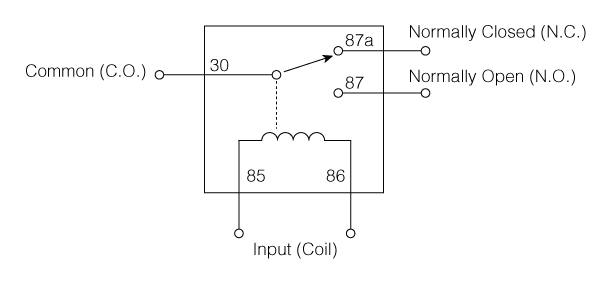What does n/o and n/c mean on a schematic diagram?
RL1 is a relay, a type of electrically-actuated mechanical switch. The swirls are the relay's coil, and the two lines indicate that it's wrapped around a magnetic core.
The thing labelled N/O and N/C is also part of the relay; N/O is "normally open", which means that switch contact is open, or disconnected, when the relay coil is not energized. N/C likewise is "normally closed", which means that switch contact is closed, i.e. connected, when the relay coil is not energized. When a current is flowing through the relay coil, the magnetic field it creates pulls the switch over, opening the NC contact and closing the NO one.
Note that in the context of integrated circuits you may see "NC" used to mean "not connected", but here with it being next to a relay's contacts it's pretty unambiguous.
NO = normally open contact
NC = normally closed contact
Normally open (NO) contacts connect the circuit when the relay is activated; the circuit is disconnected when the relay is inactive. Normally closed (NC) contacts disconnect the circuit when the relay is activated; the circuit is connected when the relay is inactive. All of the contact forms involve combinations of NO and NC connections.
Source
N.O. and N.C. stand for normally open and normally closed contacts. These are connections that are part of a relay (or relay like components, ex. Solid state relays or modules). They are not independant parts. As the name implies, normally open contacts will be open, or not connected to the common pin, when the relay is off.
RL1 is the relay which the NO and NC pins are part of. The swirly lines is the inductor, the electromagnetic wire wound core that is used to make the relay work. This diagram shows it more clearly as a single unit.

You can use a Single pole single Throw relay which will only have a normally open contact (normally closed SPST relays do exist too), or a Single pole double throw relay which will have both. Other variations of relays exist with multiple combinations of NC and NO contacts.